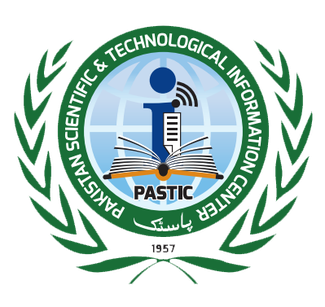A Hybrid Model for Crop Disease Detection Based on Deep Learning and Support Vector Machine
Keywords:
Crops Disease, Artificial Intelligence, Support Vector Machines, Deep Learning, AgricultureAbstract
Pakistan's agriculture sector is the backbone of its economy, contributing significantly to its gross domestic product (GDP). However, a key challenge in this sector is to counteract the crop diseases timely because these diseases result in reduced production, increased cost and eventually lead to economic loss. Traditional disease control methods are costly, time-consuming, and often lack technical support, resulting in poor disease management and harmful environmental consequences. This research harnesses the unmatched capability of Artificial Intelligence (AI) and deep learning for timely disease detection in crops. This research introduces a hybrid model that combines deep learning models with a machine learning classifier for disease detection. AlexNet, Vgg-16, ResNet50, and MobileNet are the deep learning models that have been employed for the detection of various diseases in crop leaves of rice, potato, and corn. These models have been trained by using healthy and diseased leaf images of the mentioned crops and then these models are combined with a Support Vector Machine (SVM) classifier to enhance the accuracy of detection. Experimental results show the outstanding performance of this hybrid approach for timely disease detection in crops. It is further observed that the combination of MobileNet and SVM results in an impressive accuracy of 95.68% in disease detection. This technological approach would be beneficial for farmers in the effective management and control of crop diseases thus improving the crop yield and ultimately contributing to economic growth.
References
H. M. Abbas Chandio, Jiang Yuansheng, “Agricultural Sub-Sectors Performance: An Analysis of Sector-Wise Share in Agriculture GDP of Pakistan,” Int. J. Econ. Financ., vol. 8, no. 2, 2016, doi: 10.5539/ijef.v8n2p156.
M. Z. Abbas, “Plant Breeders’ Rights Act 2016: Prospects and challenges for Pakistan as an agricultural country,” J. World Intellect. Prop., vol. 23, no. 3–4, pp. 185–201, Jul. 2020, doi: 10.1111/JWIP.12148.
G. B. T. Farhad Zulfiqar, “Agricultural sustainability assessment at provincial level in Pakistan,” Land use policy, vol. 68, pp. 492–502, 2017, doi: https://doi.org/10.1016/j.landusepol.2017.08.016.
B. B. Sinha and R. Dhanalakshmi, “Recent advancements and challenges of Internet of Things in smart agriculture: A survey,” Futur. Gener. Comput. Syst., vol. 126, pp. 169–184, Jan. 2022, doi: 10.1016/J.FUTURE.2021.08.006.
M. Zubair, A. Waleed, A. Rehman, F. Ahmad, M. Islam, and S. Javed, “Machine Learning Insights into Retail Sales Prediction: A Comparative Analysis of Algorithms,” 2024 Int. Conf. Horizons Inf. Technol. Eng. HITE 2024 - Proc., 2024, doi: 10.1109/HITE63532.2024.10777132.
T. Talaviya, D. Shah, N. Patel, H. Yagnik, and M. Shah, “Implementation of artificial intelligence in agriculture for optimisation of irrigation and application of pesticides and herbicides,” Artif. Intell. Agric., vol. 4, pp. 58–73, Jan. 2020, doi: 10.1016/J.AIIA.2020.04.002.
R. S. Chris Degeling, Mark Howard, “Managing the risks of artificial intelligence in agriculture,” NJAS Impact Agric. Life Sci., vol. 93, pp. 172–196, 2021, doi: https://doi.org/10.1080/27685241.2021.2008777.
J. P. G. Vazquez, R. S. Torres, and D. B. P. Perez, “Scientometric analysis of the application of artificial intelligence in agriculture,” J. Scientometr. Res., vol. 10, no. 1, pp. 55–62, 2021, doi: 10.5530/JSCIRES.10.1.7.
K. G. and M. S. P. Patel, “Artificial intelligence in agriculture,” Int. J. Res. Appl. Sci. Eng. Technol., vol. 10, pp. 624–627, 2022.
R. S. Mohd Javaid, Abid Haleem, Ibrahim Haleem Khan, “Understanding the potential applications of Artificial Intelligence in Agriculture Sector,” Adv. Agrochem, vol. 2, no. 1, pp. 15–30, 2023, doi: https://doi.org/10.1016/j.aac.2022.10.001.
M. B. P. Md Helal Hossen, Md Mohibullah, Chowdhury Shahriar Muzammel, Tasniya Ahmed, Shuvra Acharjee, “Wheat Diseases Detection and Classification using Convolutional Neural Network (CNN),” Int. J. Adv. Comput. Sci. Appl., vol. 13, no. 11, 2022, doi: 10.14569/IJACSA.2022.0131183.
D. et al Khamparia, A., Saini, G., Gupta, “Seasonal Crops Disease Prediction and Classification Using Deep Convolutional Encoder Network,” Circuits, Syst. Signal Process., vol. 39, pp. 818–836, 2020, doi: https://doi.org/10.1007/s00034-019-01041-0.
J. Chen, D. Zhang, Y. A. Nanehkaran, and D. Li, “Detection of rice plant diseases based on deep transfer learning,” J. Sci. Food Agric., vol. 100, no. 7, pp. 3246–3256, May 2020, doi: 10.1002/JSFA.10365.
T. S. and R. G. Poornappriya, “Rice plant disease identification using artificial intelligence approaches,” Int. J. Electr. Eng. Technol., vol. 11, pp. 392–402, 2022.
R. and S. K. Patil, “A bibliometric survey on the diagnosis of plant leaf diseases using artificial intelligence,” Libr. Philos. Pract., pp. 1–26, 2020, [Online]. Available: https://digitalcommons.unl.edu/cgi/viewcontent.cgi?article=7347&context=libphilprac
S. H. M. A. Muhammad E. H. Chowdhury, Tawsifur Rahman, Amith Khandakar, Mohamed Arselene Ayari, Aftab Ullah Khan, Muhammad Salman Khan, Nasser Al-Emadi, Mamun Bin Ibne Reaz, Mohammad Tariqul Islam, “Automatic and Reliable Leaf Disease Detection Using Deep Learning Techniques,” AgriEngineering, vol. 3, no. 2, pp. 294–312, 2021, doi: https://doi.org/10.3390/agriengineering3020020.
X. E. Pantazi, D. Moshou, and A. A. Tamouridou, “Automated leaf disease detection in different crop species through image features analysis and One Class Classifiers,” Comput. Electron. Agric., vol. 156, pp. 96–104, 2019, doi: https://doi.org/10.1016/j.compag.2018.11.005.
B. A. M. and S. S. A.-N. Ashqar, “Image-based tomato leaves diseases detection using deep learning,” Int. J. Acad. Eng. Res., vol. 2, pp. 10–16, 2018, [Online]. Available: https://www.researchgate.net/publication/330214376_Image-Based_Tomato_Leaves_Diseases_Detection_Using_Deep_Learning
R. P. Sunil S. Harakannanavar, Jayashri M. Rudagi, Veena I Puranikmath, Ayesha Siddiqua, “Plant leaf disease detection using computer vision and machine learning algorithms,” Glob. Transitions Proc., vol. 3, no. 1, pp. 305–310, 2022, doi: https://doi.org/10.1016/j.gltp.2022.03.016.
J. Kothari, “Plant disease identification using artificial intelligence: machine learning approach,” Int. J. Innov. Res. Comput. Commun. Eng., vol. 7, no. 11, pp. 11082–11085, 2018, [Online]. Available: https://www.researchgate.net/publication/345150448_Plant_Disease_Identification_using_Artificial_Intelligence_Machine_Learning_Approach
G. E. H. Alex Krizhevsky, Ilya Sutskever, “ImageNet classification with deep convolutional neural networks,” Commun. ACM, vol. 60, no. 6, pp. 84–90, 2017, doi: https://doi.org/10.1145/306538.
X. Zhang, J. Zou, K. He, and J. Sun, “Accelerating Very Deep Convolutional Networks for Classification and Detection,” IEEE Trans. Pattern Anal. Mach. Intell., vol. 38, no. 10, pp. 1943–1955, Oct. 2016, doi: 10.1109/TPAMI.2015.2502579.
S. Z. and Y. L. Wu, S., “Deep residual learning for image steganalysis,” Multimed. Tools Appl., vol. 77, pp. 10437–10453, 2018.
W. Gao, C. Zong, M. Wang, H. Zhang, and Y. Fang, “Intelligent identification of rice leaf disease based on YOLO V5-EFFICIENT,” Crop Prot., vol. 183, p. 106758, 2024, doi: https://doi.org/10.1016/j.cropro.2024.106758.
Z. P. Yibin Wang, Haifeng Wang, “Rice diseases detection and classification using attention based neural network and bayesian optimization,” Expert Syst. Appl., vol. 178, p. 114770, 2021, doi: https://doi.org/10.1016/j.eswa.2021.114770.
S. K. Meenakshi Aggarwal, Vikas Khullar, Nitin Goyal, Aman Singh, Amr Tolba, Ernesto Bautista Thompson, “Pre-Trained Deep Neural Network-Based Features Selection Supported Machine Learning for Rice Leaf Disease Classification,” Agriculture, vol. 13, no. 5, p. 936, 2023, doi: https://doi.org/10.3390/agriculture13050936.

Downloads
Published
How to Cite
Issue
Section
License
Copyright (c) 2025 50sea

This work is licensed under a Creative Commons Attribution 4.0 International License.




















